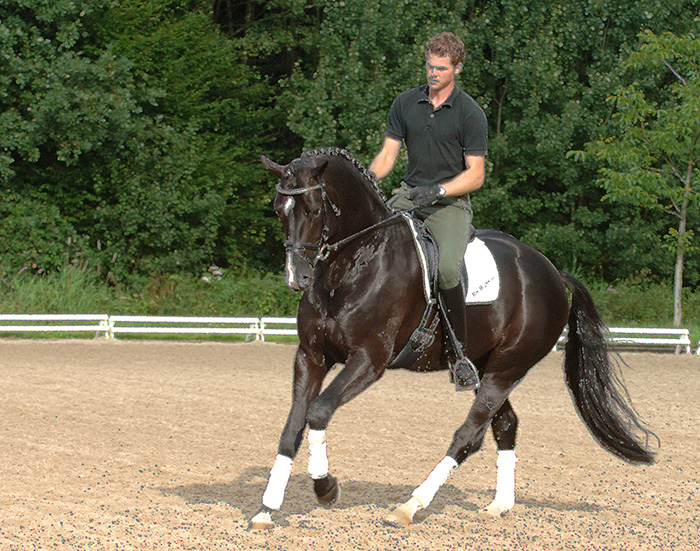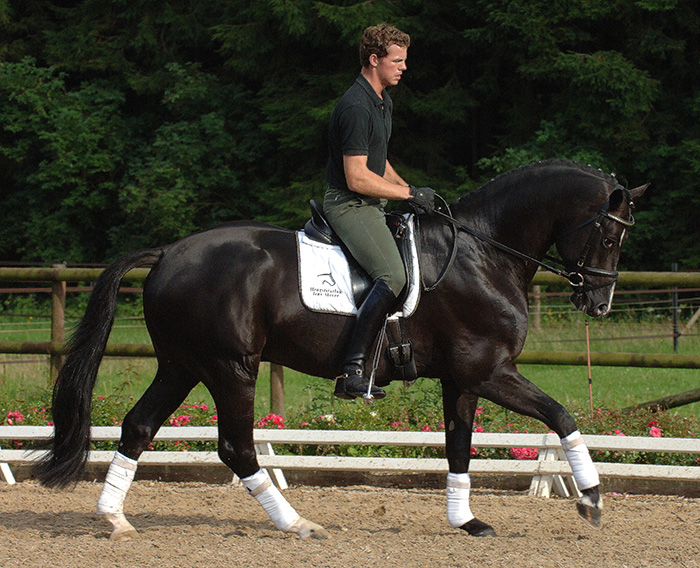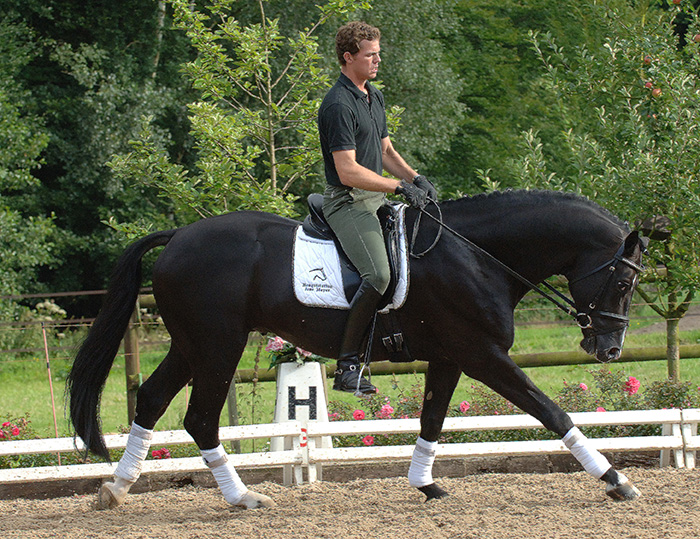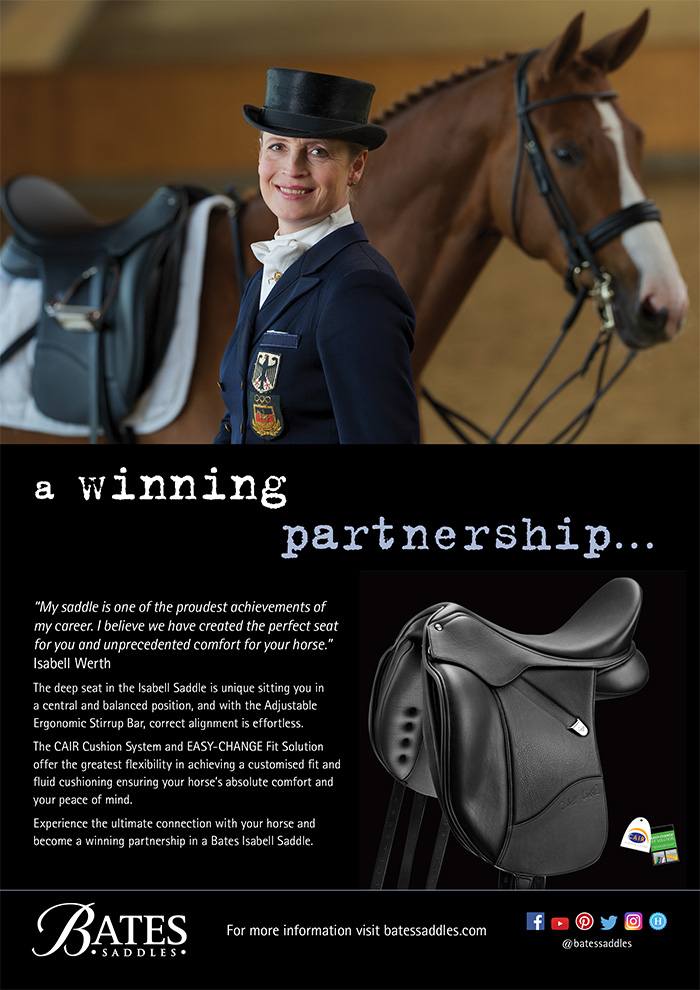Story: Christopher Hector Photos: Roslyn Neave, Rebecca Ashton, Werner Ernst
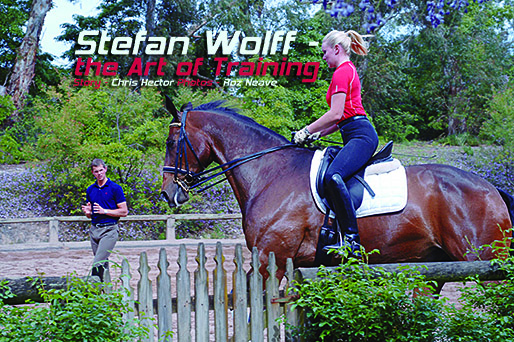
One of Stefan’s enthusiastic pupils at that first Australian clinic was Emma Weinert,
who is now based in the United States
I first met Stefan Wolff back in 2006 when Judith Balkenhol rang and said their Bereiter wanted to come to Australia, would anyone organize a clinic for him? I said that anyone who had trained with Klaus would be more than welcome, and sure enough, Clemens and Judy hosted a wonderful clinic at their Dressage Stables in Arcadia…
At the time, I finished the story thusly:
It had been a wonderful lesson, as Emma’s horse stretched and accepted the aids, as he became more supple and expansive, the quality of the paces was transformed. It was one happy rider who finished her lesson in the time honoured way:
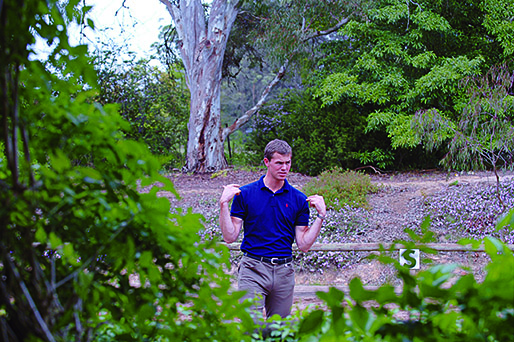
“Now rising trot, long and deep, longer and deeper, really stretch, allow, allow… enough.”
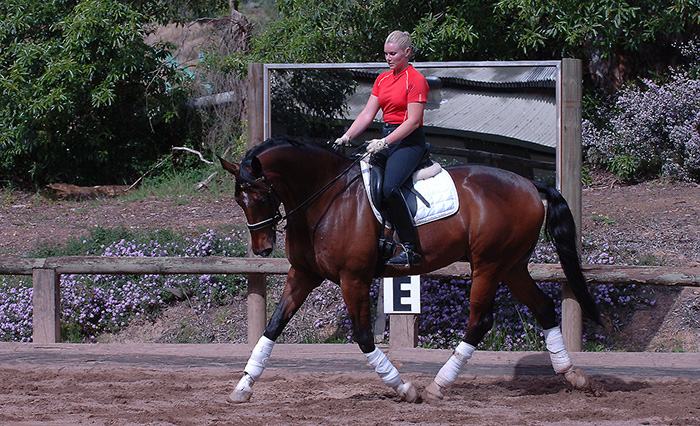
Over the past twelve years, Stefan has been a regular visitor to Australia and most recently has conducted a series of clinics at Di White’s stables in the Hawkesbury, but in all that time I never thought to spend time working out what makes Stefan tick.
We’ve never talked about how you became involved in the horse business, were your parents terribly disappointed that you didn’t end up a doctor or a lawyer…
“No, they supported me, because it was pretty clear from the beginning that that was what I wanted, but they always said, you can do it, but you have to do something else, an education as a back-up. So I went to university and finished law school… but I never practiced.”
Why were you so fixated on becoming a dressage trainer?
“I always loved it, and my parents have their own training place, it was just a natural thing to move on to, I never really thought about it. While I was at law school there were thoughts that I might become a lawyer, because I loved it, so I could have easily followed that path, but at the end of the day, I followed my passion.”
You grew up with ponies and horses…
“I had my first pony when I was three years old. My parents both were riders, my Mum competed in dressage but it started as a hobby so we are not like an old riding dynasty at all. They started it, and my mother is really the one with the horse bug. My father supported it also, he also rode, and now they have their own facility up north.”
So the bug just grew for the whole family?
“It grew and grew and grew – but look, I moved out when I was eighteen, went into the army and happened to get into the sports support unit of the army at Warendorf. That’s how I came to Warendorf and pretty much never left.”
Who was the trainer when you came to Warendorf?
“That was the late Holger Schmezer, who was the young rider coach at the time, he also took care of us, the army riders. When it came to the end of my time in the army, he asked me if I wanted to do an apprenticeship, so I started an apprenticeship with him at the DOKR.”
“That was when I met Klaus Balkenhol, because at the time he had his horses based there in Warendorf because he had moved from his own stables into his own property at Düsseldorf, and there was a time gap where he had to park the horses in Warendorf, he was the National Coach at the time. They had moved out most of the horses, but they were still finishing two stables, so they left two horses behind, I knew his daughter, and I don’t exactly remember how, I probably just asked if I could ride his horses to help out. Did that, and that’s how I got to know him better. It worked out well with the two horses that he left behind – just for a month or two – and at some point I just took all my heart and asked him if I could work for him, and he said, sure, come and work for me.”
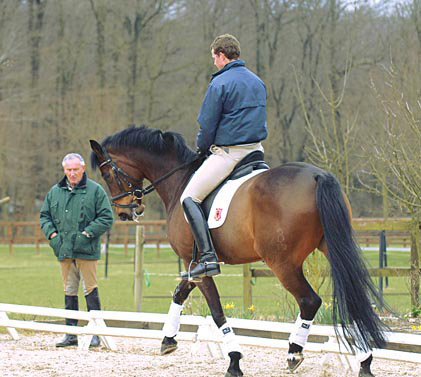
Stefan training with Klaus, and before one of our arm chair facebook experts hits the keys, yes, Stefan has a firm hold on the horse’s head as it was notoriously spooky and trying to spin off the line…
Holger Schmezer was a very successful German coach, and it always seemed to me it was because of his people skills…
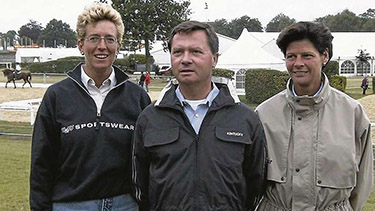
Holger Schmezer with team members, Heike Kemmer and Ulla Salzberger
“At the time I met him, I came out of nowhere and I was nobody at all, to me coming to Warendorf was a whole different world, a whole different life. I didn’t know anyone, so anyone who said anything, must have been right, I just didn’t know anything – but I think that is true, Holger was a very nice person, very easy and fun to get along with, he didn’t take everything so serious, he always had a joke and a friendly word for everyone.”
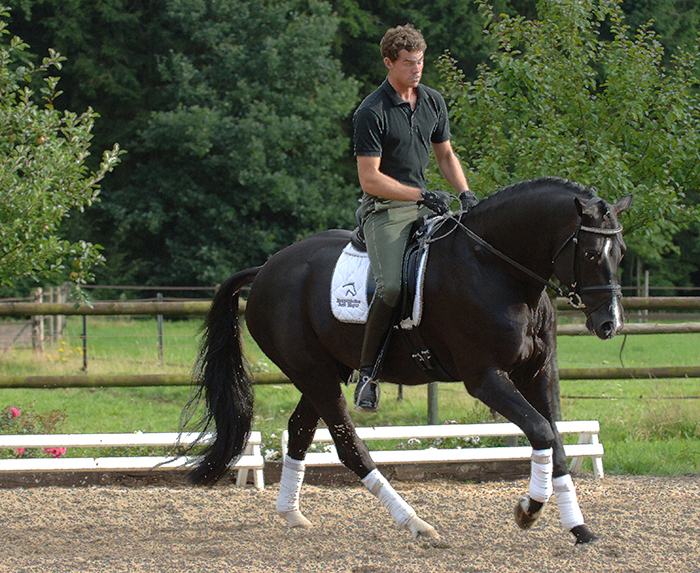
Training with Klaus must have been an extraordinary opportunity…
“Of course I was very lucky, but again, when you go somewhere like that and you don’t know much, there were hard days and hard weeks, where you get desperate and think, oh I will never make it.”
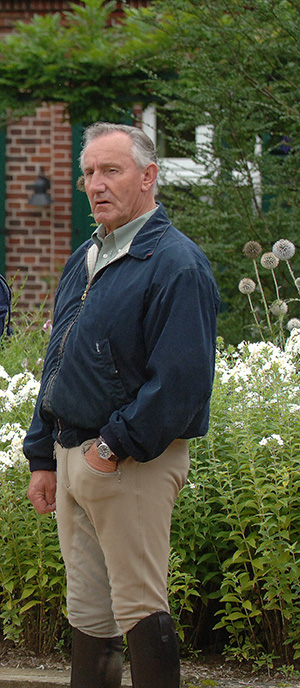
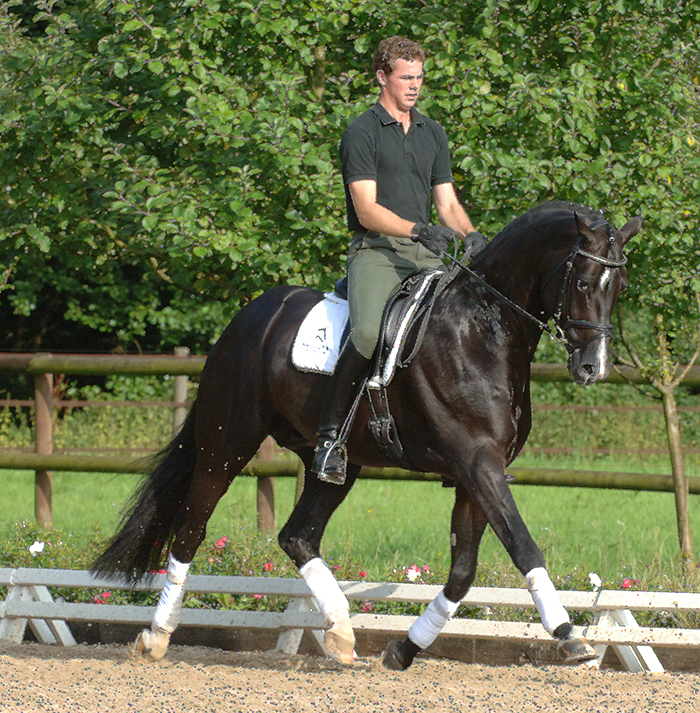
A young Stefan riding the stallion His Highness under Klaus’ watchful eye
In what areas did you find it difficult?
“Overall – look at Klaus, he just jumps on a horse and suddenly the horse changes, and you realise how wide the gap is, how big the difference is between this rider and that rider, and you are somewhere at the very bottom.”
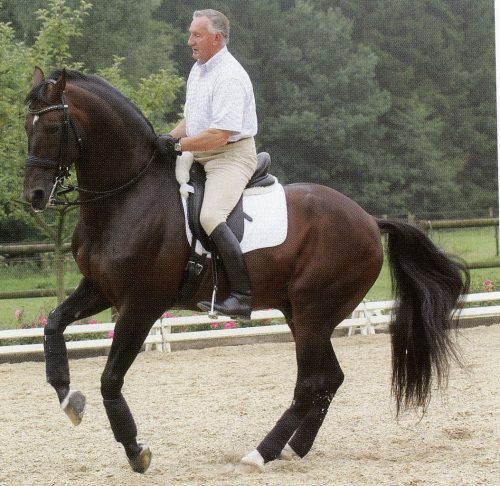
Klaus and the US team horse, Kingston (photo: Alois Müller)
So it wasn’t words, it was body language that you were trying to learn?
“I was just trying to learn as much as I could, words, body language, everthing. I think that’s what you’ve got to do, you’ve got to get every piece of information, suck it in, inhale it, and try to process it, and put the pieces together. Sometimes it is frustrating, but if you are never frustrated when you are learning, you are never going to go anywhere. So yes, it was a fabulous experience but at times it was intense and frustrating.”
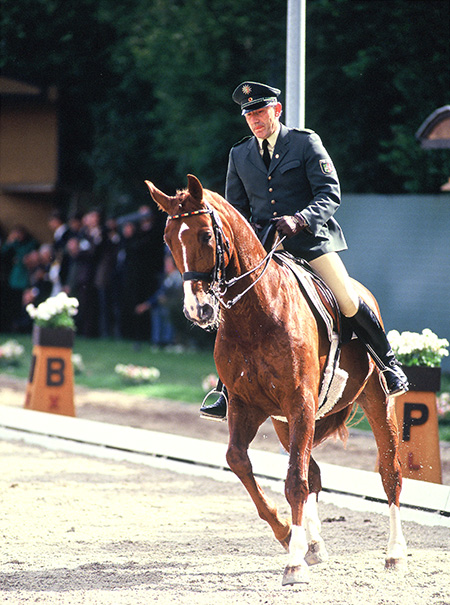
Klaus and Goldstern competing at Aachen. They won many medals together.
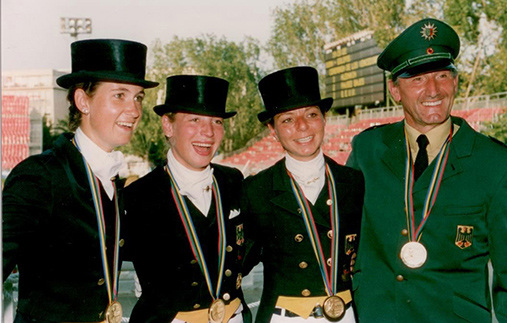
Gold for Klaus with Nicole Uphoff, Isabell Werth and Monica Theordorescu
I know that Klaus has a very developed theoretical base of his own, but watching him train and teach, he is a bit like Harry Boldt, they don’t use a lot of words, good – do it again – that’s enough…
“Or let me hop on and feel, that was always his thing. Get off the horse, let me do it! And then he rides the horse for ten minutes, and says, now you hop on and feel it. Just do it, that way. For him, you have to feel what a back feels like, you have to feel the connection of the horse, and I still know, exactly the feeling of one particular horse after he rode it. You sometimes have these moments where it just clicks and you never forget that moment, and that feeling.”
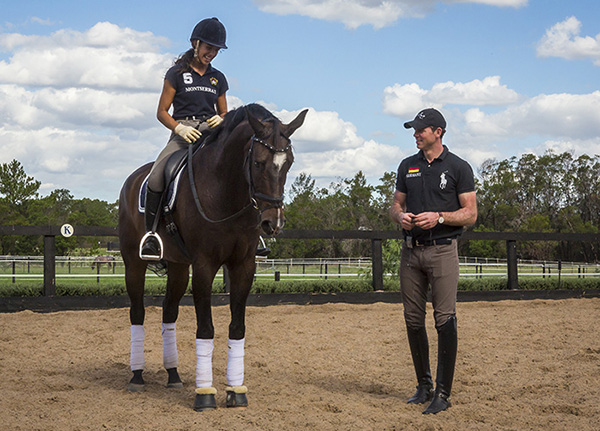
Stefan works with talented young dressage rider, Grace Kay (Photo – Rebecca Ashton)
Watching you teach now, you are a very verbally adept coach, you have about ten different ways of explaining the concept you are trying to get across. Did you have to learn that skill when you went to America?
“No, I think that is a matter of type, teaching type, there are trainers who can say things with less words, others use more explanations. I do think that trainers and riders have to find each other, there is not one perfect trainer that suits every rider. Some students like more explanation than others, some just like to watch, it is all a matter of type really, you’ve got to find a trainer and see if it matches or not.”
You went from Klaus to the United States, how long did you spend there?
“Five years, it was a fabulous time.”
What called you back – a position at the Westfalien Riding School?
“When I was with Klaus, I did my masters and that’s when I met Martin Plewa – he ran the Riding School for a long time. A few weeks after I finished the masters, I was back with Klaus and I got a phone call from Martin and he asked if I was interested to take his job at some point, not right there. I said, Mr Plewa, I am very humbled, it’s an honour but I am way too young. I was 25 or something, I did the masters very early on. I said that’s a big job if you look at who had actually had the position, names like Paul Stecken, so I said, at this point it is not the right time in my life. He said, I understand, but do you mind if I call you again when the time might be better? I said, of course, please call me.”
“I didn’t hear from him for some years, but after I’d been four years in America, he called me, and said, here I am again, it’s time for me, I am going to retire at some point, make up your mind. It took me a long time to make up my mind. We could have stayed in America, it was a fabulous time, we met the loveliest people that we still love to death. I had good training with Günter Siedel, good horses, competing went well, so it was a hard decision, but for various reasons we decided to go back to Germany, and I took that spot at the Riding School.”
Then both you and Martin left at about the same time…
“Yes, I took his advice and didn’t jump into the hot water right away, instead I took the position of Director’s Assistant, the deputy director, that was my job. It is a big, diverse program that the school runs. You don’t really want to start trying to run it without knowing all about the trainer programs. That’s what I did, and I worked with him and it was a good time, and I learnt a lot. I remember my first lecture, he just pushed me in there and said there’s 150 people out there, you come with me and we do it together. That time I had a bit of a problem getting the first words out, I was a bit nervous but it went well. Martin was very supportive and I learnt a lot from him. I think he is fantastic. Have you heard one of his lectures? He can really stun you and draw you into his subject.”
Now you have your own training centre?
“Yes, I worked there for two years and for various reasons, I decided it’s not the right thing for me. That decision did not make everyone happy but it was my decision, and I decided to take the risk and start my own business, near Münster. It is always a risk to start your own business, especially in Germany because there is so much competition there, it is not that easy but I’m happy that I’ve done it.”
What does your business look like today?
“We have round about 15 horses in work. I have three staff, I have one young man who rides for me full-time, Jye Thurgate. He does not come from a horse family, he is 25 years old, and he worked in Australia as a track rider, that’s how he made his money, and he was an eventer on the side with his own horse. He evented up to two star. He just wanted to travel Europe, he worked with an Australian eventer in England for three months, then Di White said to me, there’s this young guy and he wants to go to a dressage barn, can I give him your email address? He came for three months, and I said to him, what do you want to do with your life? Because he is very talented . He didn’t know all that much about dressage but he had a feel for horses. He said I guess I am going to go back to Australia, and back to track work, and just see if I can work my way up. I said, that’s not a career plan. I said, okay, if you want to do this, get serious. Then he asked, could I come back here, and I said yeah, you can come back but only if you do it right and do a proper apprenticeship and become a bereiter. Otherwise, I won’t take you, you are too good to just be wasted in various barns as a working student. So he went back to Australia, sold his truck and horses and came back. He is back for a year now, doing his apprenticeship, he is learning German, he is doing the full thing.”
Are you riding competitively yourself?
“Sometimes it takes a while to build up when you start without anything, I have one good horse, he won Prix St Georges, and if things work out, he will be competing Grand Prix next year.”
His breeding?
“Sir Donnerhall out of a Hohenstein mare…
Stefan bursts into laughter, I do not have a poker face, my grimace is a giveaway… “I like the Hohenstein…”
“Exactly, he’s difficult, it has been very difficult – it took me a lot of competitions to get trust but he has had a few very good tests now and is getting better – but he is not a horse for everyone, it takes a deep breath, a lot of feel, and a lot of seriousness.”
What is next? What are your ambitions?
“I haven’t competed all that much. I competed a lot in America, and then during my time at the School, there was a big competition gap, and to get back into the middle of the competition scene in Germany is really not that easy, but that is my plan, I do want to compete more. I think I have built a very solid base with my business, good clients, I don’t have much turn-over in clients and horses and I hope all that means I can be seen in the competition arena more than I have been in the past…”
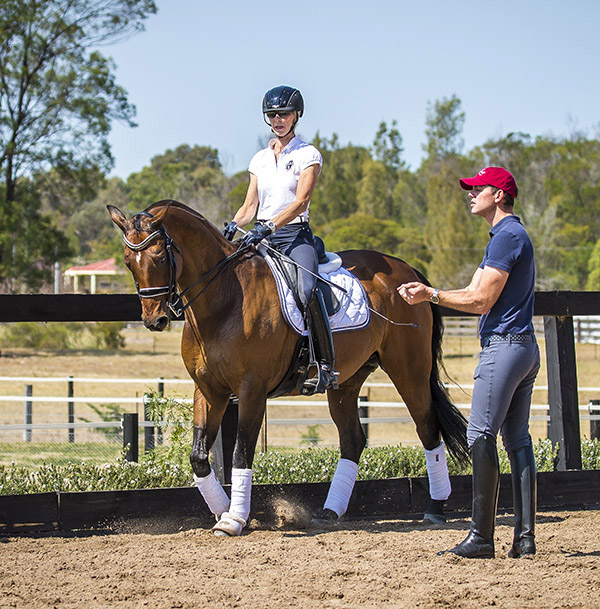
Stefan with one of his ‘regulars’ Gail Benson, riding… Stefan (Photo – Rebecca Ashton)
You’ve become such a regular visitor, what is the attraction – the sunshine, or just that we keep inviting you so insistently?
“I think I am a person who just likes consistency, I would not be happy to give a clinic here, and next week there, always seeing strangers. I like to work with people and horses over a long time, and that’s really what happens here at Di White’s place. It’s mostly the same people who come back, maybe there’s a change of one or two riders but mostly they are very consistent, they book for the next clinic before I leave, and that’s fun, I just enjoy seeing the same faces. I’m not too much of a public person really.”
Do you see an improvement in your pupils over the years?
“Definitely, the ones that I keep teaching there – absolutely!”
More of Stefan riding His Highness in his time with Klaus Balkenhol
